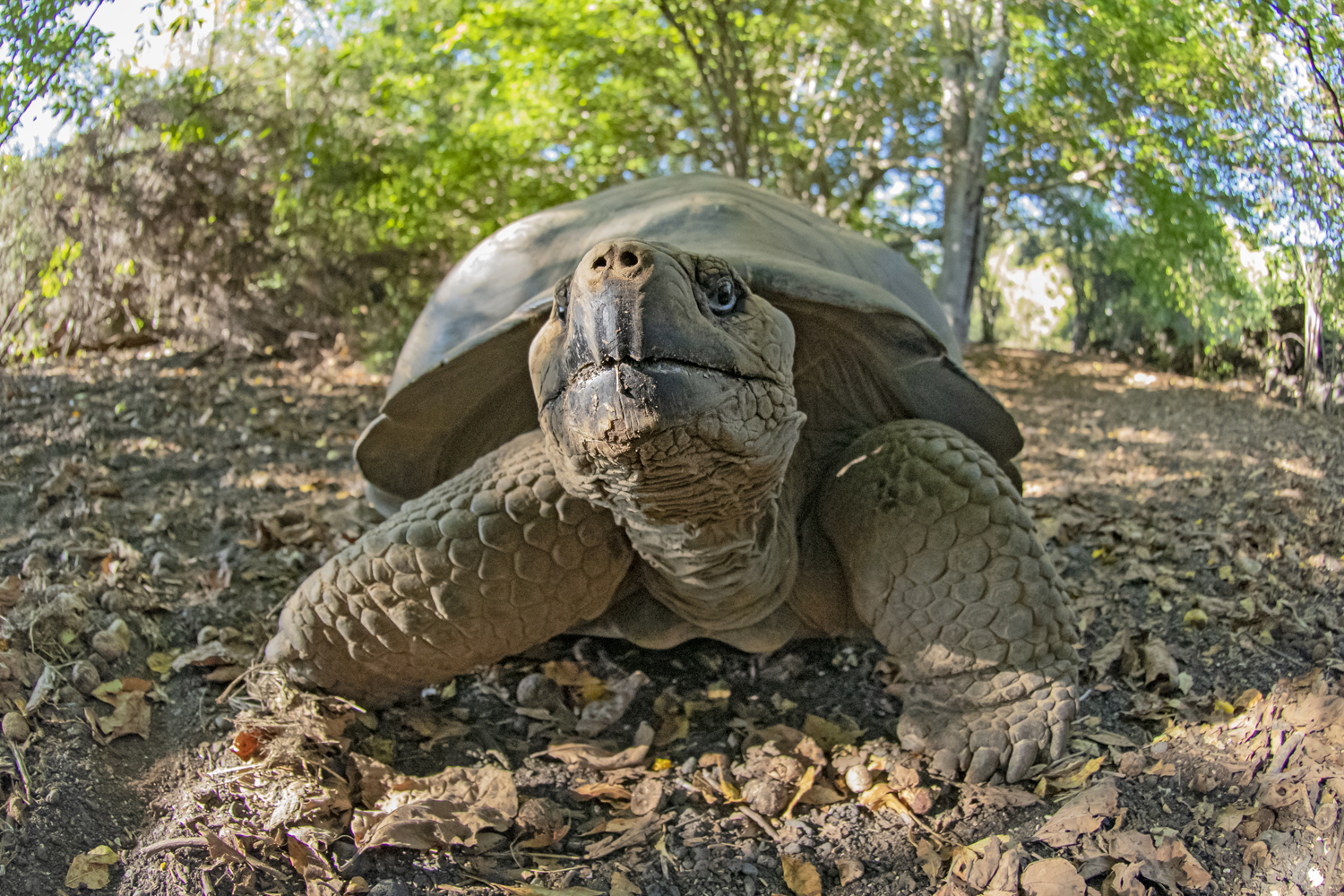After the social distancing and confinement of the past two years, everyone on this year’s Ultimate Galapagos trip was especially happy to be travelling again and enjoying the many discoveries and images they would make in Darwin’s Enchanted Islands. I made my first trip to the Galapagos Islands 30 years ago, and although there are many more annual visitors today than there was three decades ago, the experience remains essentially unchanged and as thrilling as it was when I led my first Photo Safari there in 1992. Today, roughly 95% of the total land area of the Galapagos is protected within the boundaries of the national park.

Of the 4000 plant and animal species native to the Islands, nearly half of which are found nowhere else on the planet, less than 1% have gone extinct, far better than other famous island destinations such as the Seychelles, Madagascar, Hawaii, and New Zealand where extinctions have been common. This makes the Galapagos the most pristine archipelago to be found anywhere in the tropics of the world. Author Henry Nichols writes in his authoritative book The Galápagos: A Natural History, “the Galapagos is still one of the least touched, best-preserved natural wonders of the world.”
Most of our group flew into Quito late at night, and after at day at leisure, we had plans to explore the colonial architecture of this famous historic city. Unfortunately, a large city-wide protest by truck drivers and others over the rising cost of fuel forced us to cancel the city tour and substitute the outing with a gondola trip up the flank of Pichincha Volcano, one of the highest aerial lifts in the world, rising to an elevation of 12,943 feet. It was a beautiful sunny day, and the lofty perch gave us a specular overview of the city and the vast valley in which it is located. Afterwards we had time to make a visit to the Middle of the Earth Museum where a private guide led us through a series of Ecuadorian cultural exhibits and then performed several entertaining equator tricks worthy of any carnival barker. We ended the day photographing several colourful Andean songbirds as well as iridescent hummingbirds lured to the bird feeders in the gardens of a local restaurant.

For our voyage around the islands, we travelled aboard the Tip Top II, a luxury catamaran, professionally operated by a friendly crew of eight and coordinated by veteran Ecuadorian naturalist, Peter Friere, who had 30 years of guiding experience. Peter’s special interest in photography ensured we got the most out of each landing, and the wealth of images recorded by the participants was ample testament to his efforts. Each day, we had a morning and afternoon landing, and we were always ashore in time to capture the sunrise, and again in place in the late afternoon for the golden rays of sunset. In total, we visited 15 islands, and our ambitious itinerary included all of the major photo stops a photographer to the islands could dream to experience. Some of the remarkable natural history moments we were able to witness and capture with our cameras included:

- A diurnal-hunting short-eared owl capturing a furtive wedge-rumped storm petrel and then flying over, close to our group, to consume its meal
- An amorous male giant tortoise, persistently pursuing a reluctant female, half his size, for over 30 minutes. His hormone-fueled endeavour ultimately ending in failure, after which he nonchalantly returned to grazing
- Elegant, red-billed tropicbirds courting in loquacious aerial duets as they prospected for a nesting crevice along a steep coastal cliff
- A persistent male magnificent frigatebird swooping over a sea turtle nest, eventually grabbing a tiny hatchling that was unlucky to be surfacing before nightfall
- Snorkelling with white-tipped reef sharks, a magnificent manta ray, a school of spotted eagle rays as well as rocket-fueled Galapagos penguins, algae-munching marine iguanas, and big-footed flightless cormorants, amid a kaleidoscope of green-and-blue parrot fish, scarlet cardinalfish, golden moorish idols, and yellow-tailed damselfish
- A large yellow land iguana delicately licking the skim of moisture off a cluster of beach pea leaves after a brief morning shower
- A trio of American flamingos nesting on the edge of a briny lagoon in the warmth of the late afternoon sun
- Crimson sally lightfoot crabs decorating the wave-battered shoreline like festive Christmas lights

The Galapagos Islands has always been among my top four nature destinations for wildlife photography in the same league as the Serengeti in East Africa, the Arctic’s Svalbard Archipelago, and Island of South Georgia in Antarctica. All these destinations never disappoint me which explains why I have returned to them over and over again in my 40-year career. Consider joining in June 2023 when I guarantee you will be overwhelmed by the photographic delights of Darwin’s enchanted islands.


